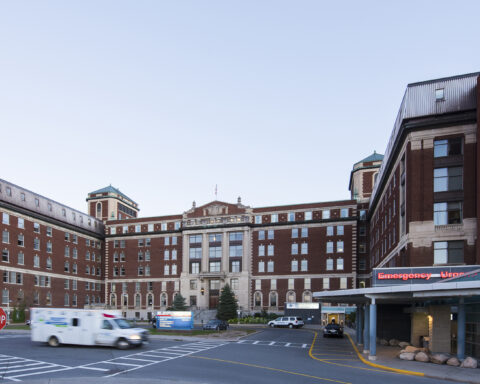Montreal-born artist Jacqueline Hoang Nguyen began her most recent project after discovering a void in Canada’s national archives: representations of multiculturalism.
“I was doing research (for the film 1967: A People Kind of Place) of forms of representation of what multiculturalism is supposed to look like,” she recalls. “I couldn’t find documents under the tagging of multiculturalism, which was, for me, a bit of a surprise for a country that prides itself for being so multicultural.”
As a result, in 2014 Nguyen embarked on a two-year project titled The Making of An Archive. The research-based artist aims to historically preserve the concept of multiculturalism through the creation an online archive that tells the everyday life stories of immigrants who arrived in Canada post-1967 – benefactors of the points-based immigration system.
Her approach has been to hold workshops in cities across the country – kicked off in Toronto during the 2014 Reel Asian Film Festival – in which community members are encouraged to bring in albums containing old, printed photographs. Nguyen and her team then digitize the photos for the archive. The participant also receives copies of all scanned photos.
“[My father’s photos suggested] the immigrant body as being politicized and believing that they do have some political agency, rather than [being] a docile immigrant body that will come to Canada and will integrate and work and buy a house, and be the model minority.” – Jacqueline Hoang Nguyen
Nguyen draws inspiration for the project from her own family, who immigrated from Vietnam in 1974.
“What triggered the making of this project, or the impetus of it, was to realize that these photographs that my parents have at home that are collecting dust … are actually images of their daily life that represent forms of struggle that are common to immigrants.”
Twenty-four-year-old Markham, Ont. resident Alan Peng says he decided to contribute his family’s photo albums because he loves the project’s concept.
“These are average moments in life and I think they can facilitate a greater conversation about the status of immigration and the way that people live,” says Peng, who was born in China and came to Canada with his parents at age four.
Surprising images challenge the idea of the “model minority”
Sifting through her parents’ old photo albums, Nguyen found photographs from her father’s days as a student at the Université de Montréal, where he was a member of the South Vietnamese Students Association. Images ranged from students preparing for protests to organizing large trips in the woods and barbecues.
“[These are] all images that surprised me,” Nguyen says, “and to think of the immigrant body as being politicized and believing that they do have some political agency, rather than [being] a docile immigrant body that will come to Canada and will integrate and work and buy a house, and be the model minority.”
The “model minority” is a concept studied by Nguyen’s primary collaborator on this project, the Toronto-based Gendai Gallery – the idea of the “good” minority who is high-achieving academically, obedient, agreeable and generally “unproblematic.”
Through a research project of its own to be completed at the end of this year, Gendai is starting a conversation around the complexities of the model minority notion – how it “subordinates the ‘good’ minority to the standards of the majority, and files other ‘un-model’ and ‘problematic’ minorities subsequently.”
Nguyen came to understand that the government has limited resources for creating archives. As a result, communities are often left to take care of their own history.
Through her discussions with Gendai, Nguyen came to the realization that the backside of multiculturalism that is rarely discussed is the question of racism. She points out that in the archives of Canada, she found a high number of documents tagged with “racism.”
“It’s interesting to think that it’s easier to represent forms of racism than [it is to represent] more of … [the] forms of multiculturalism that I’m hoping to find in this workshop series.”
Preserving immigrant history
After holding a roundtable discussion with mostly curators, artists and archivists last November, Nguyen came to understand that the government has limited resources for creating archives. As a result, communities are often left to take care of their own history.
“An unevenness of knowledge and resources available in each of the communities – and even communities that don’t recognize that their history is of importance – creates a very uneven sense of who is preserving which part of history,” explains Nguyen.
Nguyen knows all too well about this daunting challenge of building a community-based archive. That is why she gave herself two years to work on it. She acknowledges it is a difficult undertaking, one that requires a lot of outreach and building trust with Canada’s diverse immigrant communities.
“We’re hoping that people will understand about the motivations of this project, and that we’re not scanning and reproducing their images for ill purposes,” she says.
Peng, though, encourages other immigrants to take part. He says it’s not only important to document immigrants’ history for Canada as a whole, but also for recent newcomers to know the hardships faced for immigrants in previous decades – particularly visible minorities arriving in a far less multicultural landscape.
“My parents went through the struggle when they came here,” he says, adding nowadays some people who come from China don’t face the same barriers his family did. “Back then my parents had to learn to speak English … Now they don’t even need to speak English, [because] there’s enough of a Chinese community for one and they have money.”





